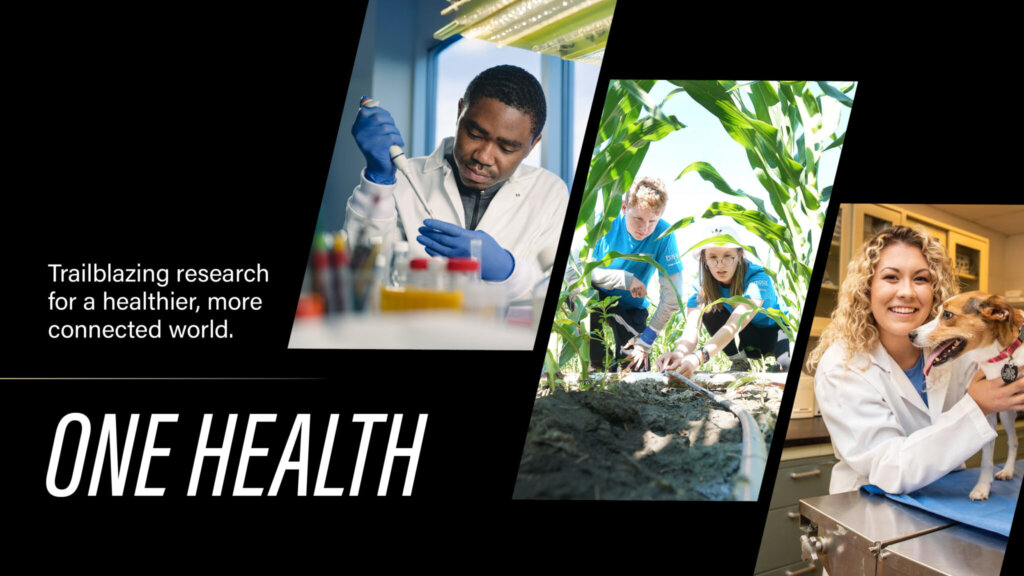West Lafayatte, Indiana, USA
February 19, 2025

Our genome determines some of our individual physical traits — like the color of our eyes — but what can it tell us about our health as a population? How might we best benefit from exercise, respond to weather stresses or recover from disease?
A new project at Purdue University will investigate whether techniques developed to test such traits in animal and plant genetics might be adapted to explore such questions in the human genome.
“This is a big idea: What have geneticists missed by working in separate fields? What advances — algorithms, models, data collection strategies — are there in animal and plant genetics that humans could benefit from, and vice versa?” said Robbee Wedow, an assistant professor of sociology and data science in the College of Liberal Arts. “Can we leverage the tools and methods to improve predictions and identify risks to humans, traits that help animals recover from disease and other stressors, or improve the resilience of plants and animals?”
In an early example, a team led by Wedow is looking at how methods that examine large datasets in animal science could be used with human accelerometer data (tracking movement over time) in concert with genomic data to predict the relationship between exercise and factors like resilience, disease resistance or lifespan.
The project builds on the Purdue team’s access to large-scale phenotypic and genome databases. Wedow’s work includes human genetic biobanks like 23andMe and the UK Biobank, plant genetic biobanks like EnsemblPlants and the DOE-funded JGI Plant Gene Atlas, and datasets across livestock animal systems through the Purdue Animal Sciences Research Data Ecosystem. The project, titled “Using Across-Phyla Methods To Increase Genomic Prediction Accuracy To Improve Health and Food Security,” is part of Purdue’s One Health initiative, a presidential research initiative that tackles complex challenges with real-world impact at the intersection of human, plant, and animal health and well-being.
“This team is taking a broad look at how variability in genetics and environment lead to populationwide health outcomes,” said Kaethe Beck, Purdue assistant vice president for strategic impact in life and health sciences. “The tools and technology that they develop can be used to extract knowledge from any genetic dataset, and their work has broad applications across all forms of life.”
The project is one of four research projects funded by a seed grant awarded through a universitywide life and health sciences summit held in November 2023.
The study of genetics has existed for more than a century, but with the passage of time, research has diverged into separate paths of human, animal or plant genetics. Wedow said he felt the separation of the fields from his earliest years as a graduate student. As a human statistical geneticist, he examines how real-world factors interact with genetics to influence a broad swath of human behaviors.
“A lot of the models we were using in the field of human statistical genetics — things like genomewide association studies and polygenic scores — were developed in animal models, but we weren’t working with animal and plant geneticists,” Wedow said. “And oftentimes I’d say to myself, ‘Wouldn’t it be cool if we could have this kind of data from humans. What are we missing from not having this data and from not working with these people?’”
At Purdue, Wedow has forged connections with other geneticists on campus, including team members Luiz Brito, an associate professor of animal sciences, and Mitch Tuinstra, a professor of plant breeding and genetics — both in the College of Agriculture and members of the Purdue Institute for a Sustainable Future — and Matt Tegtmeyer, an assistant professor of biological sciences in the College of Science.
The team sees similarities between the questions Wedow is asking about human behavior and Brito’s research on complex traits associated with animal behavior and welfare. Animal geneticists like Brito have developed breeding programs to improve multiple traits in livestock, like the yield of meat, milk, wool or fiber. But the landscape has changed, and with it, the research methods and the need for selecting animals for more sophisticated breeding goals.
“In the case of cattle, we care about multiple traits such as disease resistance, so we can decrease the use of antibiotics. We also care about breeding animals that are more productive, efficient, robust and resilient to stressors in ways that enable sustainable food production to continue,” said Brito, an expert in quantitative genetics and livestock genomics. “We’re measuring a much larger number of traits, using a lot of technology like sensors and cameras. And that means we’re able to make more accurate predictions of the genetic merit of breeding animals.”
The abundance of data in animal genetics has fueled a surge in the growth of predictive techniques built on large datasets, particularly the use of AI in modeling and analyses. Meanwhile, human geneticists, who contend with far more sensitive ethics considerations in the use and collection of data, have built models and tools that rely more heavily on assumptions. The project tests whether the techniques developed in the different fields could be applicable to the available data in each domain.
“Let’s use the infrastructure that has been developed for one field in another so that we can leverage resources, methods and knowledge to advance genomic analyses with a focus on genomic predictions in all the different species within the One Health context,” Brito said.